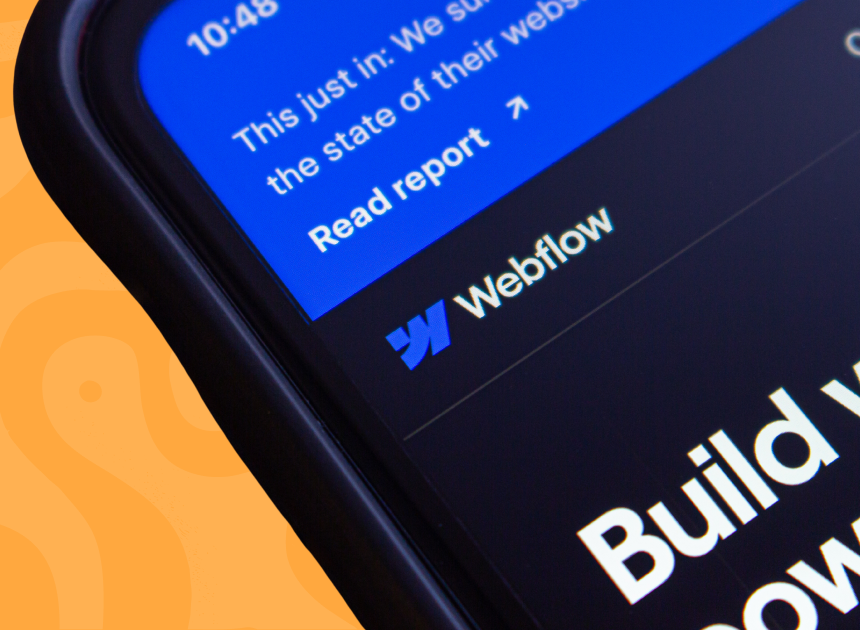We’ve written about the nitty gritty of website performance, like the relationship between page speed and conversion, why so many sites get slower over time, and so on. These are important to understand, but there is an overarching truth that must be recognized:
Your website is a growth engine.
It is not simply a brochure of your business but the key digital asset for getting potential new patients to consider, choose, and stay with your practice.
To understand why a practice’s website is foundational its growth, let’s explore 4 ways your site helps top and bottom line growth:
- Attracting Potential New Patients - A well built site helps search engines like Google feature your business to potential new patients
- Converting Website Visitors - A beautiful, high-performing site drives conversion (bookings, purchases, consultations) of new patients
- Increasing Patient Value - A well organized site steers people towards the most fitting, premium services and impacts revenue & retention
- Improving Practice Efficiency - A well-integrated site enables operational efficiencies that grow profit
1. Attracting Potential New Patients
A well built site helps search engines like Google feature your business to potential new patients.
If you have paid for a website in this millennium, you have heard of Search Engine Optimization, or SEO.
Historically, SEO has referred to the process of making your website easier for Google to find, understand, and show to people who are searching for services like yours.
A survey by Pew Research Center found that 77% of patients start their healthcare journey online. Poor SEO means you take yourself out of the start of the typical patient’s journey.
How your website is designed, structured, and coded affects how easily Google can understand and rank it. If your site loads slowly, isn’t mobile-friendly, or has confusing page layouts, it can hurt your spot in search results. A well-built site helps Google trust that your practice is professional, local, and relevant, making your site more likely to show up when patients search for dental services in their area.
Now, there are certainly external factors that will impact a site’s performance on a search engine over time, such as changes in the competitive landscape, new patient search terms, or updates to Google’s algorithm.
Internal factors are just as important. Neglected maintenance, poor handling of metadata and redirects, and suboptimal indexing settings can significantly hurt SEO performance, especially as Google’s algorithm changes.
Controlling what you can control and structuring your site to perform well in search is a critical step in getting potential new patients to enter your funnel by visiting your site. You can’t convert a patient who doesn’t know you exist.
Curious to see if your site is well-built for search? Pop your URL into Google PageSpeed Insights and check your SEO score. Note, this score does not evaluate the quality of your content.
Coming soon: Answer Engine Optimization (AEO) - Nine Yards will be posting an article soon about how the SEO space is going through its most significant expansion in decades as more and more users are turning to answer engines like ChatGPT to search for information.
2. Converting Website Visitors
A beautiful, high-performing site drives conversion (bookings, purchases, consultations) of new patients.
So, you’ve ranked well in search, and a potential new patient is on your site. How does your site build enough trust and interest to get him or her to convert?
Let’s look at 4 key factors:
- Page Speed - Speed & smoothness of site
- Aesthetics and Messaging - Beauty & harmony between design & copy
- User Experience - Ease of use for site visitors
- Call-to-Action - Clear, accessible, and desirable next step for a new patient
Page Speed
Page speed is a quantitative measure of how quickly your sight loads and optimizes.
We have another article doing a deep dive on page speed and its effect on bounce rate and conversion. But simply put:
The more slowly a page loads and optimizes, the more likely a site visitor is to leave without clicking on anything… and the risk grows with each passing second.
While the data for slow sites is grim, there is good news: page speed is mostly in your control. Aside from the quality of internet service of the site visitor (by no means a small variable), the design and code of the site determine page speed.
Design affects page speed because it sets what should show up on a site visitor’s screen. Code affects page speed by determining how the site makes the design come to life and what ultimately does show up on any given screen.
Design is the destination; code is the car, the map, the rules of the road, and the driver.
As sites get more complex, code becomes increasingly critical to page speed. For example, videos are typically large data files that require a lot of resources to load. If you decide to feature several videos on your site’s home page, this means your site has the potential to become significantly slower. How those videos are coded into the page can be the difference between an unnoticeable delay and a 10-second delay that few patients will wait through.
If you’re reading this and thinking “I paid all this money not too long ago for my site to be fast. Why has it gotten slower?” We wrote an article on why that tends to happened.
Interested in seeing your site’s page speed? Pop your URL into Google PageSpeed Insights and check your performance score. If your score shows room for improvement, be sure to look at the details under the score to get a sense of what might be driving a suboptimal score. You might see things like “unused script” which is dead code that is not doing anything or “Render blocking requests” which are large elements like videos that keep the page from loading quickly.
Aesthetics and Messaging
Perhaps the biggest disconnect I see in sites is reading a sentence like “We use the latest innovative technology to deliver beautiful smiles” on a slow site with dated, tired design.
In 2025 this paradox might be able to be chuckled off without a perceived loss of business.
75% of site visitors judge a company’s credibility based on their website’s design, says Stanford University research… in 2002. Since then, the market is becoming more and more digitally native and made up of Millennials and Gen-Z’ers who grew up online. This group is not chuckling; they are simply writing you off and finding a competitor down the street who they can take more seriously.
A slow site with tired design, such as pixelated images, inconsistent fonts, and design trends from 10+ years ago, isn’t “cool and retro;” it’s a non-starter.
Cosmetic dentistry is an aesthetic business (and a pricey one, at that). With saturated competitive markets in most urban and suburban areas, a growing subset of the population will write you off in a moment and find a company that they can take seriously.
Why should they entrust you with their most precious visual assets - their faces - if you neglect the digital “face” of your business?
In an expensive and aesthetic industry, proving to a potential new customer that you leverage technology and you know beauty begins well before the chair. Build that trust from the very first impression.
User Experience
Your business begins serving a potential new patient the second they enter your site.
In addition to building trust through fast page speed and beautiful aesthetics, you can build trust by making it easy for them to get the information they want and need. Using visual cues, clear layouts, and intuitive buttons and scrolling helps visitors get themselves to what they are looking for.
For example, a common issue I see on sites is giant walls of text that describe several procedures, one after the other. Buried in that essay is the information they are looking for, yes, but to find what they need, they have to go to work filtering through information. Better visual cues and interactive text elements can help visitors see only what is relevant to them, such as a specific procedure they are looking for.
Once a potential new patient has clicked into the right area to read about the right procedure, perhaps serving a testimonial or success story for that specific procedure may build trust, rather than them having to click all the way to a separate testimonial page.
Once they’ve been educated and seen a success story, you can deliver a call-to-action, or a prompt to get them to interact with you (booking a consultation or scheduling an appointment for example.
User experience is so often an afterthought, because many practices are focused on making sure as much information as possible is available to the site visitor.
With tech companies spending millions of dollars on smooth, intuitive experiences, expectations in the market continue to rise, and poor layouts and flows are becoming ubiquitous with dated design.
Potential new patients will not have the patience to wade through your site to the little piece that matters to them; they’ll expect to find it in a couple of clicks.
Call-to-Action
The last key component of a high-performing site is an effective call-to-action (CTA). A CTA is a prompt to get a site visitor to achieve the desired goal of your site, like buying or booking something.
Without a clear and effective CTA, potential new patients may leave your site because they are unsure of what they should do next.
A common CTA I see is something like “Interested in a consultation? Give us a call!”
This may be great for some patients, but for someone in a noisy coffee shop or slyly researching at work, a phone call might not be an option. Some research indicates that Gen-Z’ers & younger millennials find calls a poor use of time and anxiety-inducing. Furthermore, if your office doesn’t have a sophisticated automated system, a phone call would require that for a patient to book time in chair, your office needs to be open and someone needs to be available to take a call.
A digital CTA could be as simple as a basic inquiry form asking for a potential new patient’s contact information, availability, desired procedure, and any questions he or she may have. A CTA could also include incentives for a visitor to book an appointment more immediately, like a timely pop-up window that shows open slots for the week.
As the final step in the conversion process, a clear and well timed CTA is critical to turning a site visitor into a new patient.
3. Increasing Patient Value
A well organized site steers people towards the most fitting, premium services and impacts revenue & retention.
The primary driver of patient retention and lifetime value will be the quality of care you provide in and after the chair, but the path to growing patient value and retention starts much earlier.
Think of your website as your digital store. As we discussed earlier, your site should make it easy for folks to find the services and information that are most relevant to them. But what will they see as they navigate your store?
Are premium services showcased in the “window display?” As they navigate to the “aisle” they are looking for, will they pass intriguing services that spark curiosity?
Showcasing premium, advanced services not only influences your credibility but also gives a potential new patient a chance to make themselves more valuable to you by opting for a more premium service now or in the future.
While the more premium services increase revenue, a patient’s understanding that you could take care of their more complex, premium needs in the future could impact retention.
Furthermore, while your website should largely be tailored to building trust with new customers, any existing customers on your site will more likely be looking for new, premium services.
Beautifully showcasing your premium services benefits all site visitors.
4. Improving Practice Efficiency
A well-integrated site enables operational efficiencies that grow profit.
The last major growth benefit of a high-performing website is the impact it can have on your bottom line.
A site that is well integrated with the rest of your business management tools means efficiencies throughout your business processes.
Let’s walk through an example using three low-hanging-fruit integration opportunities:
- Online booking integrated with your scheduling system for automated appointment scheduling
- Intake forms linked to patient profiles for automated updating
- Site chatbots trained on your customer service records and Frequently Asked Questions
A new patient who books through a system with the integrations listed above can book any time, receives an immediate confirmation, completes intake forms in advance (meaning less time in the waiting room), and has most questions answered immediately. The practice received a booking and all necessary information without any administrative lift.
A plausible alternative for that same patient is that they call your office, no one is available to take their call, and you lose that patient entirely. Or perhaps, someone from the office is available to take their call, and for every step of the booking and intake process, someone from your team has to be on the phone with them or helping them fill out forms. On top of that, your staff might need to decipher a patient’s handwriting and retype everything that has been written into your system.
There are absolutely cases where phone calls and lengthy patient interactions are necessary, and we are not advocating for removing the personal touch of your administrative staff. These examples simply represent two ends of the profitability spectrum for serving a given patient. Your site should enable efficiencies that enhance your business.
Even if demand is high and your chairs stay full, a high-performing, well integrated website can drive efficiencies that significantly impact your bottom line.
Final Thoughts
Your website is often the first and only chance you get to make an impression. With thoughtful, beautiful design and high-performance development, those impressions can become lifelong, high-value patients that keep your top and bottom lines growing.
Want to see how your site stacks up? Reach out for a free site audit!




